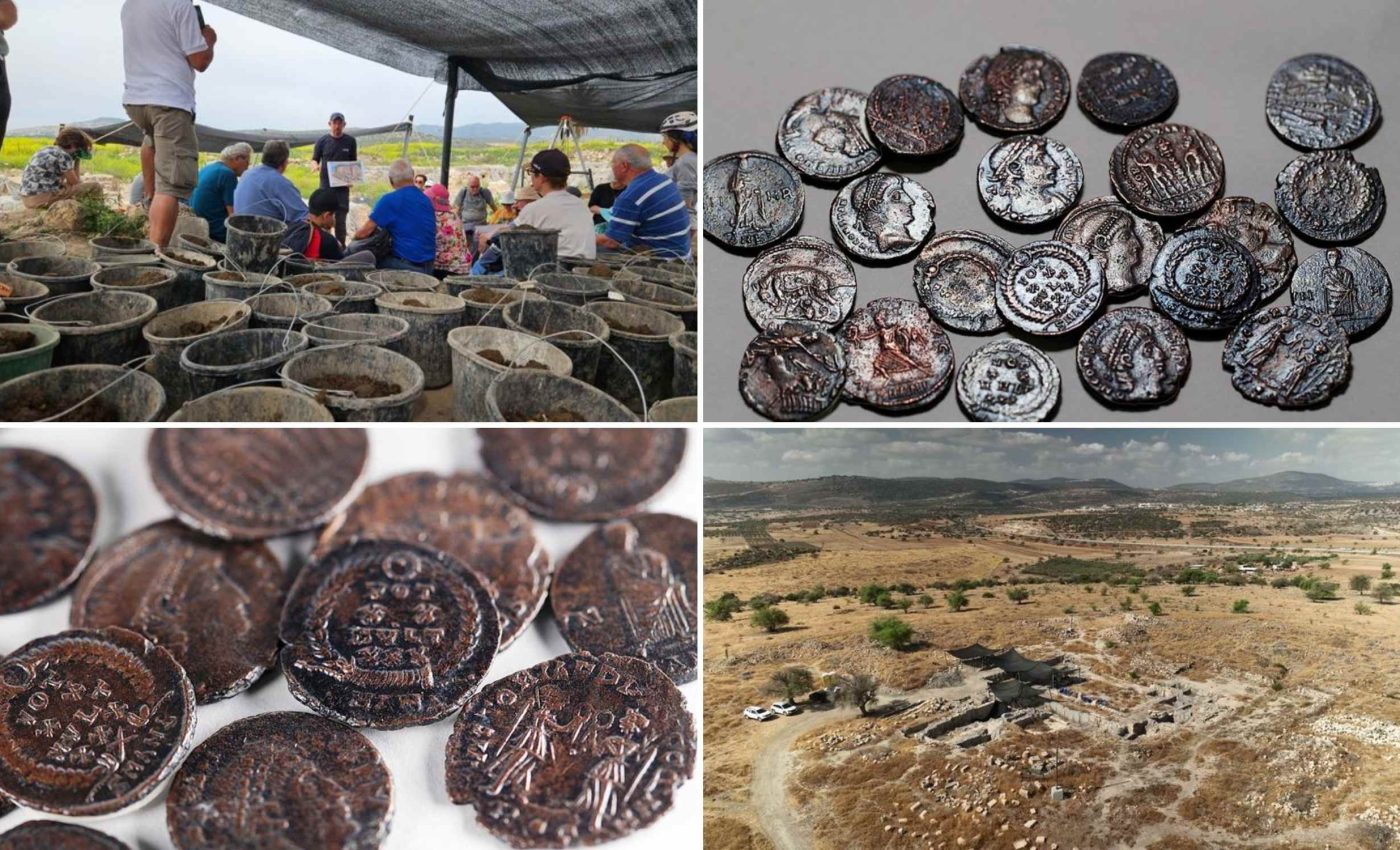
4th century Roman coins found buried in a narrow hidden tunnel
The story starts under the ancient village of Huqoq, where a small pit at the end of a twisting tunnel held 22 bronze coins from the 300s. Each coin shows a Roman emperor and, together, they point to a tense moment in the middle of the fourth century.
That moment is the Gallus Revolt, also known as the Third Jewish Revolt, which erupted in the Galilee in 351 to 352. The coins are a time stamp that ties Huqoq’s underground world to those events.
Roman coins and rebellion
Prof. Yinon Shivtiel of Zefat Academic College (ZAC) helps lead the work at Huqoq with the Israel Antiquities Authority (IAA).
He and his team first thought the cache might link to earlier uprisings, then realized the portraits on the coins tell a later story.
“When we checked who the emperors appearing on them were, we realized that the coins were from the period of the rebellion that started in Sepphoris, in 351 CE,” explained Prof. Shivtiel of ZAC.
The coins were hidden in a pit carved into a narrow tunnel and then covered.
“It seems that the people stashing this hoard carefully planned its hiding place, hoping to return to it when the threatening troubles were over.”
Rebellion details are scarce
Our sources for this revolt are thin. A late antique chronicle states that Gallus crushed the Jews after a night strike on a Roman garrison and burned cities, including Sepphoris, Tiberias, and Diospolis.
Archaeology adds a missing layer. A stash of coins is not an army report, yet it is physical proof that people in the Galilee were preparing for danger and moving valuables underground.
Huqoq’s tunnels show continuity. Families had carved these spaces in earlier crises and, centuries later, returned to them when fear rose again.
Secret tunnels and Roman coins
The Huqoq tunnels are not simple burrows but engineered systems carved from the region’s soft limestone.
Builders connected multiple chambers with narrow corridors, making entrances small enough to hide yet large enough to move food, water, and valuables.
Some chambers still bear chisel marks that show how ancient residents reused earlier tunnels instead of digging from scratch.
Archaeologists note that many of these networks match descriptions by Josephus, the first-century historian who wrote about Galilean fighters using underground hideouts during Roman sieges.
Each discovery of a tunnel or passage in Huqoq adds another line of evidence that Jewish resistance relied not only on bravery but also on detailed knowledge of geology and construction.
Dating Roman coins
Coin portraits matter because they carry hard dates. A professional Toolkit for Roman coin reporting notes that almost all Roman coins can be dated to an emperor’s reign, and sometimes even more precisely.
That is exactly the case here. The effigies of Constantius II and Constans are a built-in calendar, narrowing the window to the mid 300s.
Dating coins is part of numismatics, the study of money as evidence. In digs like Huqoq, numismatics turns small metal discs into a timeline that sits right beside ceramics and radiocarbon dates.
Earthquake erased the trail
History did not stop with the revolt. Inscriptions and studies record the earthquake of 363 CE that shook the region from the Galilee to Petra, killing residents and wrecking towns, as documented by ancient inscriptions.
That quake makes the archaeology hard to read. Destruction from soldiers and damage from seismic waves can look similar in collapsed walls, tilted thresholds, and broken floors.
Shivtiel has argued that this is why the Gallus Revolt leaves so little in the dirt. A major quake, less than a dozen years later, scrambled the record.
From hiding tunnels to hope
The Huqoq story does not end underground. Radiocarbon dates and careful stratigraphy now place the monumental synagogue, with its vivid mosaics, in the late fourth to early fifth century.
That matters because it shows a community that recovered and invested in public life. After fear and loss, people commissioned art, raised walls, and wrote donors’ names in stone.
One tile border shows a tiger chasing an ibex, a detail that hints at craft and budget. The same village that hid coins later paid for color and story on a synagogue floor.
What we learn from a small hoard
A cache of bronze coins is not gold, yet its value is historical. It ties a barely recorded revolt to a specific household decision to hide money and wait.
It also connects personal risk to wider politics. Emperors’ faces on coins are propaganda, but they double as dates that let us test what texts say.
Put together, tunnels, coins, and mosaics give a compact arc. People sheltered in crisis, lived through an earthquake, then built a synagogue that still commands attention.
—–
Like what you read? Subscribe to our newsletter for engaging articles, exclusive content, and the latest updates.
Check us out on EarthSnap, a free app brought to you by Eric Ralls and Earth.com.
—–













